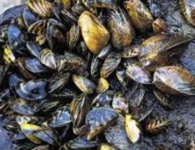What’s in our Lake? ... In order of frequency

Chara (muskgrass)
You know this one. Most common algae in our lake. Looks like a plant on the bottom of the lake, but is really a algae, made up of single cells. When it dies it floats up on the surface, and has a musty smell. It is mostly beneficial to our lake, except that it continues to grow all summer, and can get out of control.
where: entire lake (65% Frequency)

Filamentous algae
Filamentous algae are single algae cells that form long visible chains, threads, or filaments. In our lake, much of it looks like green slime cotton candy. These filaments intertwine forming a mat that resembles wet wool. Filamentous algae starts growing along the bottom in shallow water or attached to structures in the water (like rocks or other aquatic plants). Often filamentous algae floats to the surface forming large mats, which are commonly referred to as “Pond scums.”
where: entire lake (26% Frequency)
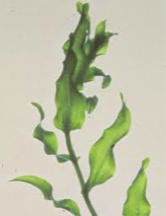
Large Leaf Pondweed
Large floating leaves, will continue to grow to the surface as the summer progresses. Leaves arched and folded. Great for fish cover
where: entire lake (2% Frequency)

Elodea Common Waterweed
Slender stem. Leaves, whorls of 3. Branching stems, may get stuck on your propeller.
where: entire lake (Frequency 8%)
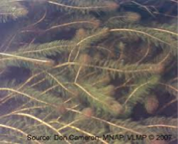
Northern Milfoil (the good kind, not Eurasian)
Light colored stems, 5-12 leaflets, 4-5 leaves per whorl.
where: south end of lake (6% Frequency)
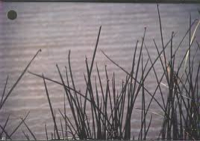
Hardstem Bulrush
Tall sturdy stems. appear leafless
where: mostly east side of lake (2% Frequency)
Zebra Mussels
... an invasive species, first appeared on our lake a few years ago. We all know this one, however there are worse members of the mussel family that we do not have. We must be careful with our boats!
where: entire lake, mostly visible on sandbars

Sago Pondweed
Long, thin, narrow leaves resemble pine needles. Leaves end in a sharp point. Provides food and shelter for fish
where: entire lake (12% Frequency)
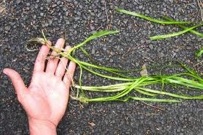
Wild Celery
Ribbon like leaves resembles thick grass with tips growing to the surface. Leaves have a center stripe of lighter green in the middle. By late summer, they become very thick and make getting in and out of your dock difficult.
where: entire lake, in shallow water. (2% Frequency)
Lake de Neveu Fond du Lac, Wisconsin
Species
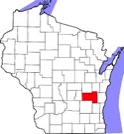
Coontail
Coontail, or sometimes called hornwort, is a dark olive-green, rootless submerged perennial plant that often forms dense colonies. Leaves are relatively stiff, whorled with many forks and small teeth along one edge. The tips of branches are crowded with leaves giving it a “coontail” resemblance. (5% Frequency)
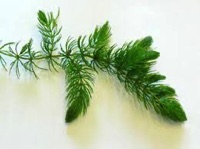
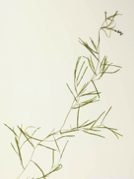
Stiff (Narrow leaf ) Pondweed
Straight narrow leaf
(Frequency 8%)

Water Star Grass
Simple alternate leaves
(5% Frequency)
Slender Naiad
Clustered or whorled leaves
(2% Frequency)
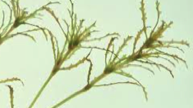
Based on the National DNR Lake assessment 2017
